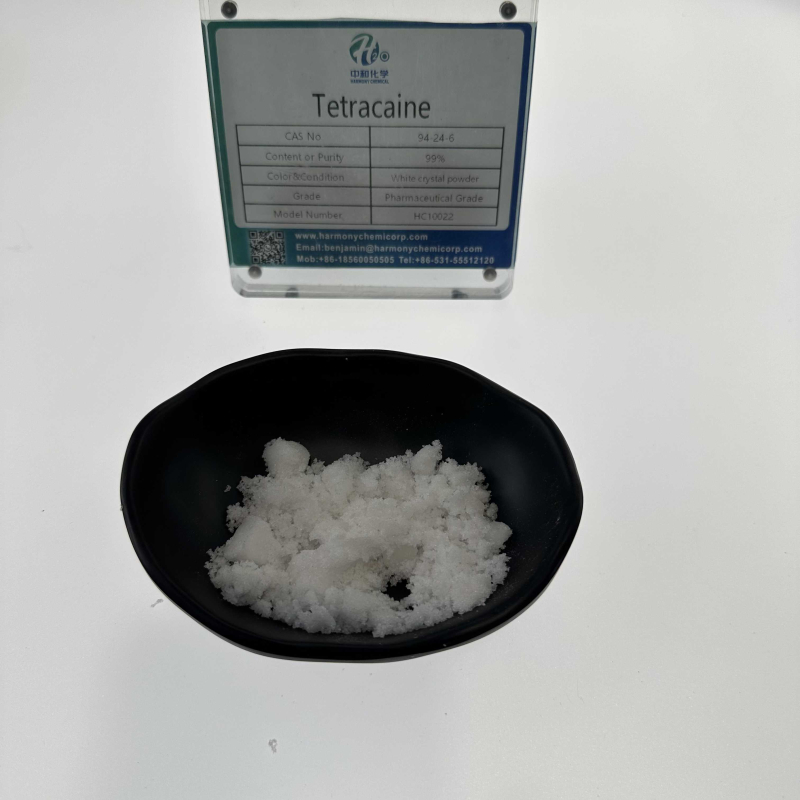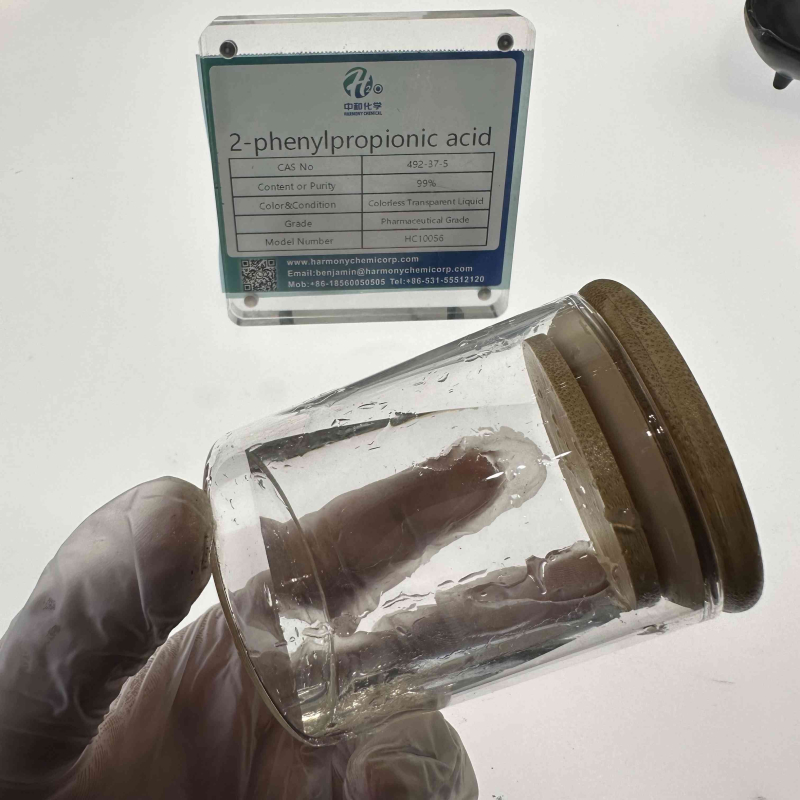Manganese carbonate, additionally acknowledged as manganese carbonate, has the chemical components MnCo3. Molecular weight 114.95. White hexagonal crystal or rose purple crystal. Specific gravity 3.125. Difficult to dissolve in water, soluble in dilute acids. Decompose in boiling water. At a hundred ℃, it decomposes into carbon dioxide and manganese oxide, and above 330 ℃, it decomposes to launch carbon dioxide and carbon monoxide. Roasting in air produces manganese trioxide. Roasting in oxygen generates manganese trioxide.
Contact Now
Melting point>300 ° C (lit.)Density1.25Vapor pressure0Paat25 ℃Storage conditionsStorebelow+30 ° CSolubility450g/lFormCrystallinePowderChemicalbookAcidity coefficient (pKa)12.5 [at 20 ℃]ColorWhite to most whitePH value11.7 (110g/l, H2O, 20 ℃)Water solubility450g/L (20 º C)Guanidine carbonate is a chemical substance with the molecular system C2H10N6H2CO3.
Contact Now
Melting Point2-4 °C (lit.)Boiling Point90 °C (lit.)Density1.069 g/mL at 25 °C (lit.)Vapor Density3.1 (vs air)Vapor Pressure18 mm Hg ( 21.1 °C)Refractivityn20/D 1.368(lit.)Flash PointStore below +30°C.Although phosgene has excessive reactivity, its fairly poisonous and corrosive byproducts pose significant environmental strain and will progressively be phased out; DMC has a comparable nuclear response response center.
Contact Now
Zirconium acetate (liquid), a colorless obvious liquid organized by way of the response of zirconium oxychloride and sodium carbonate. Widely used in industries such as medicine, cosmetics, electronics, ceramics, paint, glass, etc.Density1.279g/mLat25 ° CFormliquidWater solubility931g/Lat20 ℃InchiKeyMFFVROSEPLMJAP-UHFFFFAOYSA-JCAS datalibrary 7585-20-8 (CASDataBaseReference)EPA Chemical InformationAceticacid, Zirconiumsalt (1:?) (7585-20-8)
Contact Now
nameTetracaineCAS NO94-24-6Molecular formulaC15H24N2O2molecular weight264.36melting point41.0 to 45.0 °Cboiling point407.59°C (rough estimate)Storage conditions2-8°CAcidity coefficientpKa 8.33±0.03(H2O
t = 20.0
I = 0.10 (KCl)) (Uncertain)formpowder to crystalcolourWhite to Almost whiteIntroduction: Dicaine is a white crystalline or crystalline powder, odorless, slightly bitter in taste, and has a tingling sensation. Soluble in water, soluble in ethanol, insoluble in ether or benzene.
Contact Now
nameUlipristal AcetateCAS NO126784-99-4Molecular formulaC30H37NO4molecular weight475.62melting point183-185 ºCboiling point640.1±55.0 °C(Predicted)density1.19Storage conditions-20°Cformpowdercolourwhite to beige
Contact Now
Epidural AdministrationofRopivacainehydrochloride monohydrate effectivelyblockneuroethicpain(bothmechanicalallodyniaandheathyperalgesia)withoutinductionfanalgesictoleranceandsignificantlydelaystheevelopment ofneuropathicpain producedbyperipheral nervenjury.Ropivacainehydrochloride inhibitionpressure-inducedincreasesinfiltrationcoefficient(Kf)withoutaffectingpulmonaryarterypressure (Ppa), Pulmonary capillary pressures(Ppc),andzonalcharacteristics(ZC).Ropivacaine hydrochloride monohydrate preventspressure-induced lungedemansociatedhyperpermeability yasevidencebymaintainingPaO2,lungwet-to-dryrati
Contact Now
nameDapoxetine hydrochlorideCAS NO129938-20-1Molecular formulaC21H24ClNOmolecular weight341.88melting point175-1790CStorage conditionsroom tempformpowdercolourwhitesolubilityDMSO: ≥20mg/mL
Contact Now
Tetracaine hydrochloride is used for mucosal floor anesthesia, conduction anesthesia, epidural anesthesia, and subarachnoid anesthesia; Used for ophthalmic floor anesthesia, barring constricting blood vessels, detrimental corneal epithelium, and growing intraocular pressure.nameTetracaine hydrochlorideCAS NO136-47-0Molecular formulaC15H25ClN2O2melting point149°Cdensity1.1279 (rough estimateStorage conditions2-8°Csolubilityalcohol: solublesoluble 40 parts of solventformneatcolourWhite to Almost whiteSOLUBLESoluble in water at 50mg/ml
Contact Now
namePramoxine hydrochlorideCAS NO637-58-1Molecular formulaC17H28ClNO3molecular weight329.86melting point181-183°Storage conditionsInert atmosphere,Room TemperaturesolubilityChloroform (Slightly), Methanol (Slightly)formneatcolourWhite to Off-White
Contact Now
name5-FluorouracilCAS NO51-21-8Molecular formulaC4H3FN2O2molecular weight130.08boiling point190-200°C/0.1mmHgdensity1.4593 (estimate)Storage conditions2-8°CsolubilityH2O: 10 mg/mL, clearformpowdercolourwhite
Contact Now
CAS NO492-37-5Boiling point260-262 °CDensity1.1 g/mL at 25 °Cflash point>230 °FStorage conditionsSealed in dry,Room TemperatureFormLiquidColourClear pale yellow to yellowpH value3 (5g/l, H2O, 20℃)SOLUBLE10 g/L (20 ºC)Molecular formulaC9H10O2
Contact Now
nameClorsulonCAS NO60200-06-8Molecular formulaC8H8Cl3N3O4S2molecular weight380.66melting point194-203°Cboiling point651.7±65.0 °C(Predicted)density1.800±0.06 g/cm3(Predicted)Storage conditionsKeep in dark place,Inert atmosphere,2-8°CformneatcolourWhite
Contact Now
nameTriisobutyl phosphateCAS NO126-71-6Molecular formulaC12H27O4Pmolecular weightv266.31boiling point~205 °Cdensity0.965 g/mL at 20 °CStorage conditionsStore below +30°C.solubility0.26g/lformOilcolourColourless
Contact Now
nameLinezolidCAS NO165800-03-3Molecular formulaC16H20FN3O4molecular weight337.35melting point176-1780CSpecific RotationD20 -9° (c = 0.919 in chloroform)boiling point585.5±50.0 °C(Predicted)Storage conditionsroom tempformpowdercolourwhite to off-white
Contact Now
Density1.13 [at 20 ℃]Vapor pressure0.317Paat25 ℃FormViscousLiquidColorGreenWater solubilityIn soluble in waterExposure limitNIOSH: IDLH10mg/m3; TWA0.015mg/m3Nickel naphthenate is an natural compound with the chemical formulation of C22H14NiO4. It is normally used as paint drier, timber preservative, water resistant agent for fabrics, insecticide and bactericide.
Contact Now
AppearanceWhite crystalline powder, white block shape, white block shapeContent%≥ ninety nine ninety five 90Melting factor ℃128 128 128Water solubility 20 ℃ one hundred a hundred one hundred 100Water solubility60 ℃ 429 429 420PH valueshut to neutral, shut to neutral, 4% aqueous answer pH price 7.50-8.50 7.50-8.50 7.00-9.00Moisture%≤ 0.4 0.5 0.8UsageFlame retardant processing for wallpaper, fibers, carpets, curtains, and different materials.
Contact Now
Due to the shortcomings of urea formaldehyde resin such as terrible preliminary viscosity, massive shrinkage, excessive brittleness, water resistance, handy aging, launch of formaldehyde, and air pollution of the surroundings and injury to fitness in the course of curing, it is integral to regulate it to enhance its overall performance and increase its application.
Contact Now
nameFlorfenicolCAS NO73231-34-2Molecular formulaC12H14Cl2FNO4Smolecular weight358.21melting point153 °CSpecific Rotation26 +17.9° (DMF)boiling point618℃Storage conditionsInert atmosphere,2-8°CformsolidcolourWhite to Off-White
Contact Now
1. Insulating carbon black is no longer non-conductive, however its leakage cutting-edge is very small or inside the limit, which potential it can't be pure gold. Our insulation carbon black has an insulation resistance of over 1014 Ω, and beneath sure conditions, the DC micro modern-day can be decreased to beneath 10-16A.2.
Contact Now
Application1. Used as formaldehyde trapping agent to remove formaldehyde remaining in fabrics after finishing by 2D-resin, KB-resin, urea-formaldehyde resin, melamine-formaldehyde resin, etc. It is also used as an intermediate of fine chemicals, used in the manufacture of resins, plasticizers, spray paint, adhesives, etc.2. used as formaldehyde capture agent, intermediate of fine chemicals, also used in the manufacture of resins and formulation of plasticizers, spray paint, adhesives and other uses for the synthesis of chiral microporous materials prepared from non-chiral precursors;3.
Contact Now
The conductivity of carbon black is carefully associated to its shape (especially graphite microcrystalline structure), floor properties, and particle size. The conductive mechanism of carbon black in rubber often consists of conductive channel and Field electron emission mechanism. The conductive channel mechanism is that carbon black aggregates come into contact with every different in the adhesive to structure a community like channel and behavior electricity.
Contact Now
nameOzagrel sodiumCAS NO189224-26-8Molecular formulaC13H11N2NaO2molecular weight250.23Storage conditionsStore at -20°CSOLUBLEWater: ≥ 44 mg/mL (175.84 mM)It is suitable for the treatment of the dyskinesia associated with vasospasm after the operation of acute thrombotic cerebral infarction and Subarachnoid hemorrhage and the improvement of the symptoms of cerebral ischemia.
Contact Now
Purpose:Shugeng Glucose Sodium is a selective Muscle relaxant, which is typically used for muscle spasticity and hypertonia.
Contact Now




























